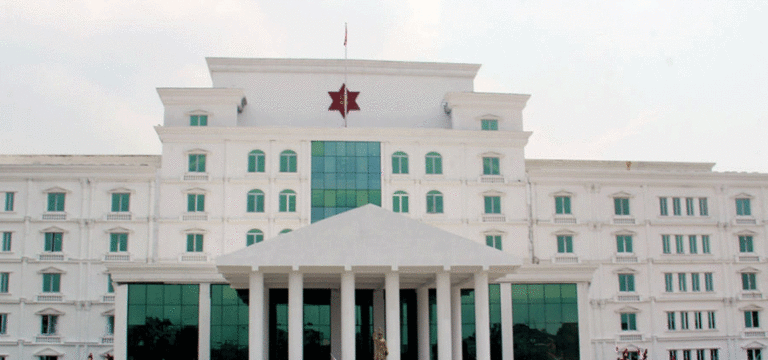
The Nepali Army Headquarters (NAHQ) has pushed ahead its concept of three plus one command structure in place of existing structure of the eight Division Headquarters.
Although the proposal to this regard has already received a government nod, the concept will come into operation only from Mid-July, 2021, Spokesperson at the Army Headquarters and Brigadier General Shantosh Ballave Poudyal said.
Stating that the current structure of the army is administrative one in nature, he said that the command would fulfill all the military needs.
According to Poudyal, the Command Headquarters will be led by Major General, the two stars general. Earlier, the Division Headquarters, seven in provinces and one in the Kathmandu Valley, also used to be led by Major General.
The NA, which has now gone to the command structure, has also forecasted the names of the commanding generals to head the command headquarters, according to a source at the Army Headquarters.
Accordingly, Ashok Raj Sigdel has been appointed as the Commanding General of the Valley Command Headquarter, Bigyan Dev Pandey as Western Commanding General, Binay Bikram of the Central Command Headquarter and Shantosh Kumar Dhakal of the Eastern Command Headquarters.
The appointment of four Commanding Generals proposed by the Army Headquarters needs to be approved by the Cabinet.
In absence of the Commanding Generals, the command headquarter will be handled deputy commanding general, which will be of the Brigadier General rank.
What is Command structure?
The army has claimed that the command concept will fulfill the military needs and operation modality in a more efficient way. “The Army Headquarters now will have time and energy to focus on issues of strategic nature while the commands will deal with the operational issues,” said the spokesperson.
He said that the concept of four command structures was designed by analysing the geographical areas based upon the three major river basins of Nepal.
The army is setting up Eastern command including some of the districts of Province 1, 2 and Bagmati in the Koshi river basin, Central command by making a base to Gandaki river basin, the Western command focusing Karnali river basin and some of the Far-western districts. Having special strategic importance of the capital city, Kathmandu, there will be one separate Valley Command.
Spokesperson Poudyal said that the command concept would not add any financial burden to the state and that it was ready to move ahead by adjusting the posts, units, battalions and brigades internally.
CoAS Purna Chandra Thapa, right from the time he assumed his office three years back, had taken the initiative to advance the concept of this command structure.
Source : THE RISING NEPAL,





